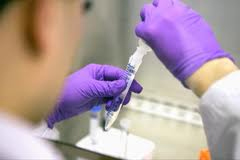UK: Scientists gain insight into PCV-2 virus

Scientists working to control one of the most widespread and damaging pig diseases have demonstrated that its causative virus infects immune cells, evading detection by the host immune system, and rendering the host more susceptible to infections.
The research published in PLOS One also shows that once the PCV-2 virus – which can cause Post Weaning Multisystemic Wasting Syndrome (PMWS) – infects immune system cells, different genes within them are switched on and off.
The discovery demonstrates one reason why PMWS is so difficult to control, but the BBSRC-funded researchers, working at The Royal Veterinary College, The Roslin Institute at the University of Edinburgh, Animal Health and Veterinary Laboratories Agency and Zoetis Animal Health, hope it may offer new avenues of research to develop better preventative treatments.
PMWS is present in all pig-producing countries and costs UK pig farmers millions of pounds a year in losses. Pigs between five and 12-weeks-old are affected with symptoms including weight loss, wasting, breathing problems, enlarged lymph nodes and death. Current vaccines reduce the economic and animal losses due to the disease, but do not eliminate the virus
PMWS is a complex disease, and the exact relationship between infection with PCV-2 and the disease state is unclear, making it particularly challenging to control. Based on the work conducted as part of this BBSRC-funded project, it became clear that environmental stress to pigs can trigger symptoms.
Professor Dirk Werling, who led the research, said: “We were puzzled by the fact that the virus seems to affect cells in different ways, and that it can infect immune cells without detection. Once the virus is in cells it is very hard to act against it. This research helps show why PMWS is so hard to combat, but a greater understanding of the PCV-2 virus will offer new opportunities to develop treatments.”
The team infected three types of healthy pig immune cells with a PCV-2 virus strain currently circulating in the UK.
They saw that infection took place without apparent detection by the immune system, and once infected gene expression within the infected immune cells changed significantly. This infection is believed to be a significant step in the establishment of the disease state in pigs.
Within pigs many cell types, including the bone marrow, can can harbour the virus without showing any signs, acting as a reservoir.
Symptoms only kick in once the cells have to deal with other stressors, potentially offering an explanation for the occurrence of clinical signs seen.
This work was funded from the BBSRC ‘Combating Endemic Diseases of Farmed Animals for Sustainability’ (CEDFAS) initiative, with contributions from BPEX, Biobest Laboratories and Zoetis Animal Health.
The paper Global gene expression profiling of myeloid immune cell subsets in response to in-vitro challenge with Porcine Circovirus 2b is published in PLOS One.
Source: BBSRC











